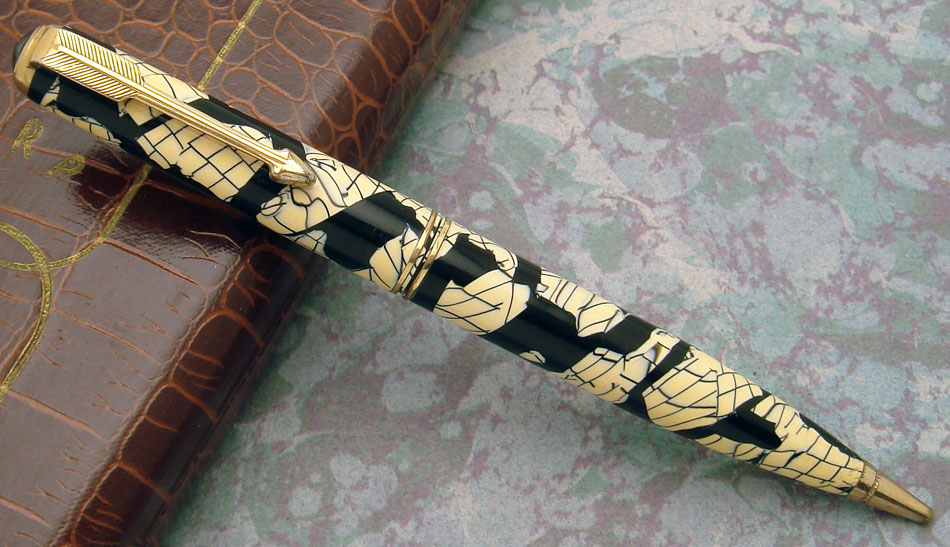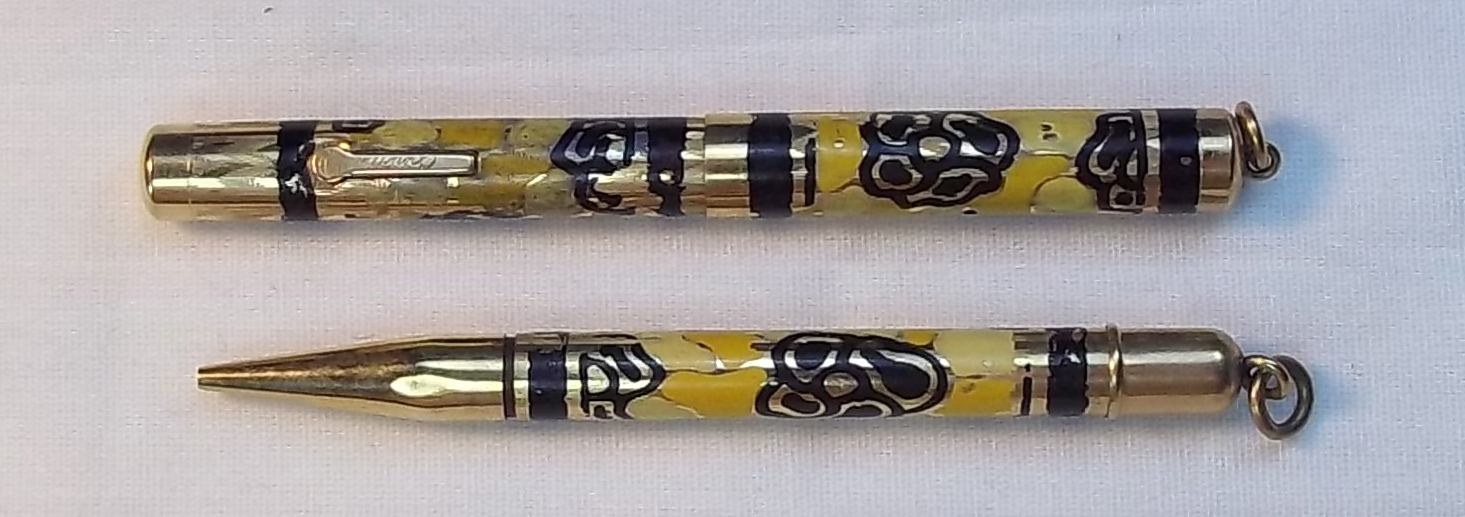Hi,
"Special" of course has a substantial subjective component.
In our hobby rarity is but a element of the multifactorial soup that creates collector cachet.
Though "special" perhaps is not synonymous with "collector cache" and though neither formally defines value, there does seem to be a bit of grandiosity in play with this pen, speaking purely from my own perspective, which is of course subjective too.
Aztecs and Snakes have a long and storied association with our hobby and are well-known (if not maximally rare) examples of the high art of overlay pens from the first decade of the last century.
I probably could identify some Wearevers rarer in collectable pendom's experience than the Aztec. Such pens still likely are worth about $10. Again, rarity isn't everything.
The pen under discussion is rare and charming no doubt. THat a pen of significant collector cachet (the Senior Duofold in Mandarin) is the substrate for the painting, and that a painted yellow DF has not been reported before certainly add some oomph.
But to some degree, the pen is a tweak, a quirk, a mapping of a general technique to a pen not usually so treated. Interesting tweaks on typical pens add value. They rarely add 900%. Solid Gold cap-bands on Parker Vacumatics (Canadian pens in which many sizes and colors were so treated) add value. They tend not to add hefty multiples of value. Finding such a band on an intrinsically more expesive pen (red maxima) likely adds proportionately less value than finding one on a cheaper color.
We can speculate about the general case of the painted pen. If a 1930 metal ring-top Sheaffer in great shape retails restored at $150 (maybe you could find a raw one in ok shape on ebay for $40) and if a painted metal ring-top Sheaffer with great paint preservation sells for $300, does the period-painting of the pen double the value? Does it double it for all pens? Or is the value additive, an extra $150 for the paint whether found on a pen otherwise worth $100 (now $250) or otherwise worth $1200 (now worth $1350 with paint)? There are not hard rules, but the math at least can be contemplated.
Also, remember that collectors can't add. 2 examples (and yes, there can be exceptions) regarding dollar value:
1. Within a series and model, special nibs should not be combined with a pen with rare color or trim. A red Vac Maxima should not be fitted with a flex double broad stub nib. Better to put the special nib in a much cheaper black pen and a plain nib in the expensive red-color pen. Why? Some collectors want a monster nib and will pay bonus. Others want a desirable/high-cachet color and will pay bonus. A much smaller pool will want both features at same time and be willing to pay double bonus.
2. Rare trim raises value more for common color pens. Parker 51 with Empire cap (two tone gold) can gain more value from the cap on a cheap color (black) vs expensive color (Nassau). Some collectors want a rare color. Some want solid gold cap. Each will pay a bonus. Fewer will pay double bonus for both feature.
The pen shown in the OP raises similar challenges. There are collectors of painted pens. They will pay a bonus for the paint. There are Duofold collectors who want a scarce and expensive color, yellow. They will pay a bonus vs the basic black Duofold Senior. Fewer by far will pay a double bonus.
The pen is neat for being impressive and for being anomalous. But, per earlier math model shown, 1930s painted pens sell by one model for $150 more than non-painted pens and by another model double the price of non-painted pens (yes, we can argue that either model is not a rule across the entire spectrum of painted pens). It is a bit of a jump to turn a $1200 Mandarin into a $15,000 piece and to link to Aztecs and Snakes and such. Indeed, I would assert that to many serious Duofold collectors, a Senior done in off-catalogue (small-run, prototype, whatever) color adds more to value than would a trim/finish tweak such as an odd cap-band pattern, solid-gold trim or... perhaps even painting.
Here i Sa Vacumatic pencil in an uncommon and off-catalogue plastic. Care to offer views as to whether it is worth more or less than would be a typical-color Vacumatic with 1930's paint applied, something never before seen?

There are other reasons to offer a crazy price on ebay for a fascinating and impressive pen such as the painted yellow Duofold. It generates terrific publicity. It can hook a motivated fish. It can serve show-and-tell or show-and-brag purpose, which can be fun. It likely does not reflect realistic expectations.
But, in my view-- and I speak as one who would not at all mind owning the pen in question-- a pen that represents a quirky mix of well-known technique and well known (and not really that rare) model/color is not worthy of the iconic status of Aztec, etc.
regards
david



























